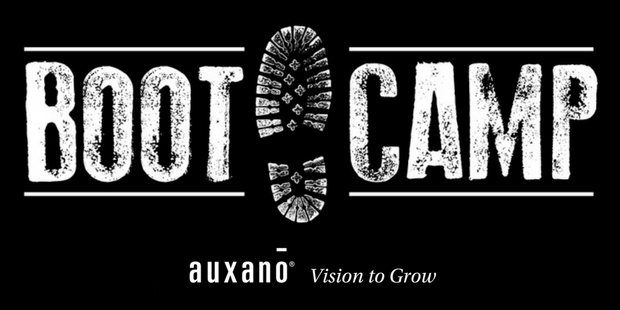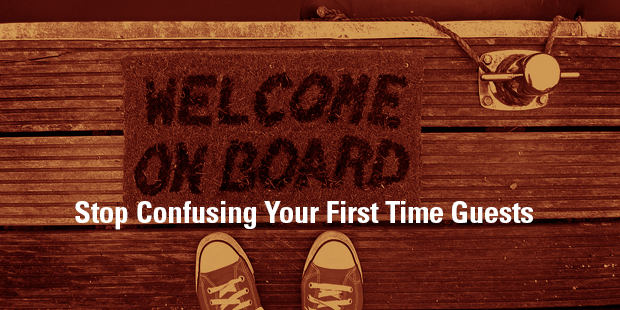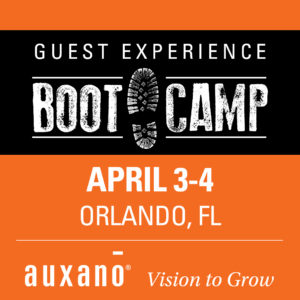A common picture at many churches this weekend would look something like this: a couple of people – maybe even a literal couple – stand outside the church’s main entrance. Depending on the weather, they may actually be inside the doors. As people approach the door, they open it and give a brief “hello” or “good morning” or some other similar platitude. Across the lobby, at the doors to the sanctuary or auditorium or large gathering room used for worship, the scene is repeated. Only, this time, the doors are usually propped open and an usher is standing there with a stack of bulletins, giving them out as people enter.
After all, isn’t that the purpose of greeters and ushers? Don’t they have a job description that outlines what they do each weekend?
Danny Franks, Connections Pastor at Summit RDU, gives a brief and compelling argument that hospitality teams serve more than just a utilitarian purpose. While acknowledging the importance of system and process, he challenges us to look at the beauty of hospitality:
The beauty of guest services is that it serves as a signpost to the gospel. Our planning and strategizing and vision casting and volunteer recruiting may indeed reduce combustion points and increase efficiency, but that shouldn’t be the reason we do it. Guest services should ultimately point to the kindness of Jesus. Our hospitality should be a catalyst.
What about your church? Your hospitality teams, in whatever form and name you give them, are literally the first face of your church as guests engage your campus and worship environments. What kind of gospel-impression are they making?
image
THE QUICK SUMMARY – Be Your Customer’s Hero by Adam Toporek
On the front lines of customer service, every day presents new and unexpected challenges—and even the most dedicated employees can be caught unprepared. They need confidence. They need training. They need help.
Be Your Customer’s Hero answers the call. The book provides customer-facing professionals with short, simple, actionable advice designed to transform them into heroes in the eyes of the customers they serve. Quick chapters show readers how to:
- Achieve the mindset required for Hero-Class service™
- Understand the customer’s expectations—and exceed them
- Develop powerful communication skills
- Avoid the seven triggers guaranteed to set customers off
- Handle difficult and even irrational customers with ease
- Become an indispensable part of any frontline team
Armed with the tools and techniques in this book, readers will start each workday knowing they can conquer whatever problem comes their way.
A SIMPLE SOLUTION
You see that guest pulling into your parking lot? What are his or her expectations? Who set them? How will you know if you met them, let alone exceeded them?
The first interaction or comment your guest encounters initiates two very valuable aspects of the rest of your guest’s experience:
- It creates a first impression
- It sets the expectation for what the guest is about to encounter.
Creating a First Impression
As a starting point, here are some points to a positive first impression:
- Everything matters – the more important the impression is, the greater your focus should be on everything
- Focus on the other – as in the other person’s needs, wants, and concerns
- Be your best self – making the effort and discipline to present the best of who you are to the guest in front of you
Setting the Level of Expectation
You should examine carefully and think thoroughly about the initial impression and expectation-setting ritual you follow when a guest first approaches you. Think about it: when you go in a store or a restaurant, and if you are greeted at all, does it sound genuine and sincere – or just a bored, memorized greeting with no emotion behind it?
The initial, front-line team in your Guest Experience ministry is crucial to establishing a high expectation, and then exceeding it.
When a customer walks into your world for the first time, seize the opportunity to start the relationship off well by making sure you create a great first impression. You only get one shot at it, and the payoff is well worth the effort.
What I love about first impressions is that they are an opportunity to set the tone for the rest of the experience. When a customer comes to your location for the first time or interacts with you for the first time, you have an opportunity.
On the front lines, understanding the importance of first impressions is essential to knowing how to start off customer interactions on the right foot. Customers are making up their minds about you and your organization in the briefest of moments, and these early impressions have a direct impact on their subsequent expectations.
The characteristics of first impressions can be broken down into two basic categories: environmental and interactional. Environmental characteristics are the things the customer observes as she walks through the door. When a customer enters your door, she is analyzing everything – even when she doesn’t know she’s doing it.
Interactional characteristics are the details of your first exchanges with the customer. Did you seem genuinely helpful or like someone who was just going though the motion because it was your job? Everything about you – your posture, your tone of voice, and your actions – is being evaluated by the customer in those first moments.
Adam Toporek, Be Your Customer’s Hero
A NEXT STEP
The expectations that you set for guests are obviously very powerful – as are the expectations they have of your ability to fulfill their needs and desires.
Read through the following questions and take time to answer them for yourself:
- How do you currently understand the expectations that guests have of you? How could you do a better job of discovering what they really want?
- Take a look at one specific interaction that you have with a guest. Develop two ideas of additional steps you could take that would enhance the connection you have with the guest in that situation.
- Describe in as much detail as possible the first impression that you are delivering as a guest pulls into your parking lot. How could you enhance it to create an even more powerful impact upon the guest’s expectations?
Next, in a team meeting with the leaders of your hospitality teams, write the questions above on three separate pages of a chart tablet and display them. Go through each question with the leaders, noting their answers.
After you have completed all three, compare and discuss your individual answers with those of the team. Reconcile any differences, and outline the steps needed to make sure your first impression is consistent across all your hospitality teams – both in practice each weekend and in training new team members as they come on board.
Taken from SUMS Remix 42-2, published August 2016
This is part of a weekly series posting content from one of the most innovative content sources in the church world: SUMS Remix Book Summaries for church leaders. SUMS Remix takes a practical problem in the church and looks at it with three solutions; and each solution is taken from a different book. As a church leader you get to scan relevant books based on practical tools and solutions to real ministry problems, not just by the cover of the book. Each post will have the edition number which shows the year and what number it is in the overall sequence. (SUMS provides 26 issues per year, delivered every other week to your inbox).
> Subscribe to SUMS Remix <<

Tags: Adam Toporek, Church Guest Experience, First Impressions, Guest Experience
|
What is MyVisionRoom? > | Back to Execution >



































